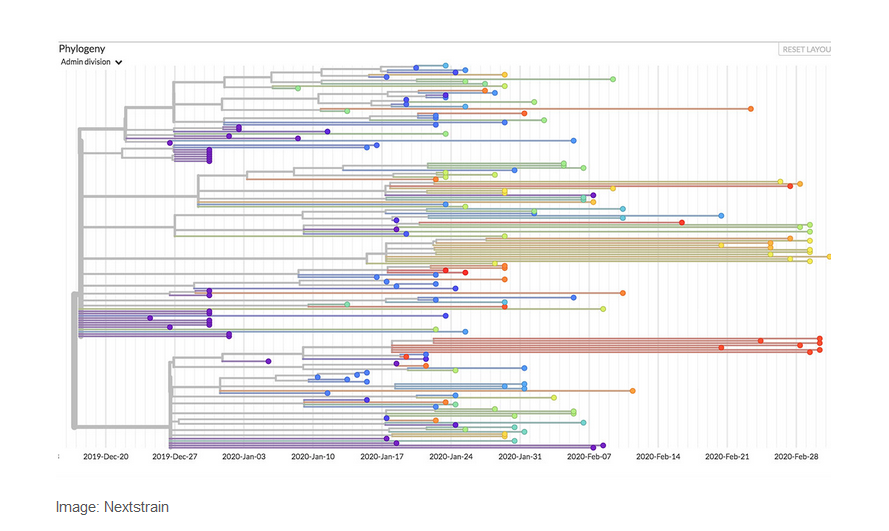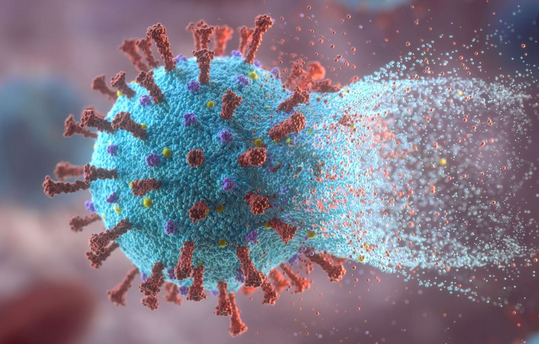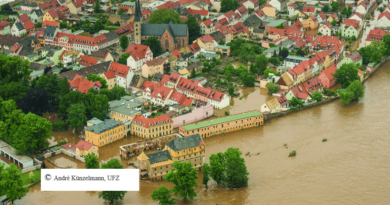Covid-19 and its mutations
Derives from pandemy?
In Denmark, some 15 to 17 million minks were condemned to death fearly November 2020. One week later it is no longer an imperative but a government recommandation. Originally it was the farmers who transmitted Covid-19 to their minks, which could have then mutated and been retransmitted to humans with a strain more resistant to the human immune system. So farmers were isolated and minks have been felled. This is because mink have the same Covid-19 receptors than humans [9].
Other animals can also serve as hosts for the virus, such as dogs and cats, but the virus does not adapt to them and cannot spread anymore. In contrast, the Covid-19 adapts very well in mink (and the Mustelidae family by extension), especially in farming situations [9].
France, Greece, Spain, Italy and the Netherlands are also monitoring and reacting to mink. In each of these countries, a few thousand animals have been killed, particularly in Spain where nearly 100’000 minks in a single farm were tested positive for Covid-19. The case of the Netherlands presents an the same particularity as in Denmark : farmers being reinfected by minks [2].
Uncertain evolution
All viruses could mutate during their transmission [7]. In the summer of 2020, a new strain of SARS-CoV-2, this time the variant called G614, emerged in Spain and spread rapidly [5]. This is the strain that is responsible for the second wave currently in Europe. Notably, it seems that these mutations have led to greater infectivity of the virus [3]. The hypothesis is the following: SARS-CoV-2 would benefit from a better adhesion and infiltration on these hosts [3].
Another mutation was detected this summer in Scotland. This new strain of SARS-CoV-2 is thought to have mutated on outer protein envelope of the virus. It is through this protein that our antibodies identify the virus as such. However, the major concern raised by this discovery is that the vaccine is based exactly on this recognition effect and therefore risks becoming unusable if this strain spreads [1].

(Source of the image: [10] take back this image from Nextstrain 2020, a software for phylogenetic)
Here is the phylogenetic tree of the first strain of SARS-CoV-2. Each point corresponds to another sequencing RNA (equivalent of the DNA for a virus) of one sample, in correlation with the date of the determination. This kind of tree helps to follow the development of the disease .
However, it also appears that mutations in the virus can lead to a weakening of the virus, as was the case with SARS-CoV-1 in 2003 [5]. The only certainty about the mutations is that they are impossible to predict and that they depend strongly on the number of replications that the virus can carry out.
References
[1] Bordenave, Vincent. « Covid-19: une mutation du virus très surveillée ». LEFIGARO. Consulté le 7 décembre 2020. https://www.lefigaro.fr/sciences/covid-19-une-mutation-du-virus-tres-surveillee-20201127.
[2] Bordron, Maïwenn. « Contamination au Covid-19 : de l’animal à l’homme, une transmission du virus “exceptionnelle” ». France Culture, 17 novembre 2020. https://www.franceculture.fr/sciences/contamination-au-covid-19-de-lanimal-a-lhomme-une-transmission-du-virus-exceptionnelle.
[3] Cookson, Clive. Financial Times. « Des scientifiques alertent sur la propagation d’une nouvelle variante de coronavirus ». SWI swissinfo.ch. Consulté le 7 décembre 2020. https://www.swissinfo.ch/fre/pand%C3%A9mie-de-covid-19_des-scientifiques-alertent-sur-la-propagation-en-europe-d-une-nouvelle-variante-de-coronavirus/46128778.
[4] SudOuest.fr. « Covid-19 : un an après, que sait-on de l’origine du virus ? » Consulté le 1 décembre 2020. https://www.sudouest.fr/2020/12/01/covid-19-un-an-apres-que-sait-on-de-l-origine-du-virus-8138160-10861.php.
[5] Deluzarche, Céline. « Coronavirus : une variante espagnole du virus à l’origine de la deuxième vague meurtrière en Europe ». Futura. Consulté le 7 décembre 2020. https://www.futura-sciences.com/sante/actualites/coronavirus-coronavirus-variante-espagnole-virus-origine-deuxieme-vague-meurtriere-europe-80914/.
[6] Balloux, François: «Il y a beaucoup de «patients zéro», il est inutile de chercher les coupables!» ». Le Temps, 11 mai 2020. https://www.letemps.ch/sciences/francois-balloux-y-beaucoup-patients-zero-inutile-chercher-coupables.
[7] Logean, Sylvie. « Le SARS-CoV-2 mute, et alors? » Le Temps, 24 juillet 2020. https://www.letemps.ch/sciences/sarscov2-mute.
[8] Mayer, Nathalie. « Le coronavirus est-il d’origine naturelle ou issu d’un laboratoire ? Décryptage avec le virologue Étienne Decroly ». Futura. Consulté le 1 décembre 2020. https://www.futura-sciences.com/sante/actualites/coronavirus-coronavirus-il-origine-naturelle-issu-laboratoire-decryptage-virologue-etienne-decroly-84059/.
[9] Perrin, Olivier. « Covid-19: au Danemark, les visons ne font pas la une quand ils sont abattus pour finir en manteaux de fourrure, mais maintenant oui ». Le Temps, 11 novembre 2020. https://www.letemps.ch/opinions/covid19-danemark-visons-ne-une-abattus-finir-manteaux-fourrure-oui.
[10] Waltz, Emily. « Software and Genetic Sequencing Track the Coronavirus’s Path – IEEE Spectrum ». IEEE Spectrum: Technology, Engineering, and Science News. Consulté le 8 décembre 2020. https://spectrum.ieee.org/the-human-os/biomedical/devices/genetic-sequencing-and-online-software-tools-track-caronaviruss-path.




